Before we start: Donemax Data Recovery for Mac, one of the best Mac data recovery software, is fully capable of recovering lost data on a M3-chip Mac. It not only can recover permanently deleted files from a M3 Mac, but it also can recover formatted or inaccessible data from a M3 Mac or external storage device.
PAGE CONTENT:
With the launch of Apple's M3-chip Macs, users are experiencing impressive gains in performance, efficiency, and battery life. Built on cutting-edge architecture, the M3 series - comprising the M3, M3 Pro, M3 Max and M3 Ultra chips - has further solidified Apple's dominance in the high-performance computing space. However, even with the latest advancements, no system is entirely immune to data loss.
Whether you've accidentally deleted important files, experienced a failed macOS update, or encountered a corrupted external drive, data recovery is just as crucial on M3-chip Macs as it was on earlier models. This guide provides a deep dive into M3 Mac data recovery, outlining practical recovery solutions, software tools, and preventive strategies to protect your data.
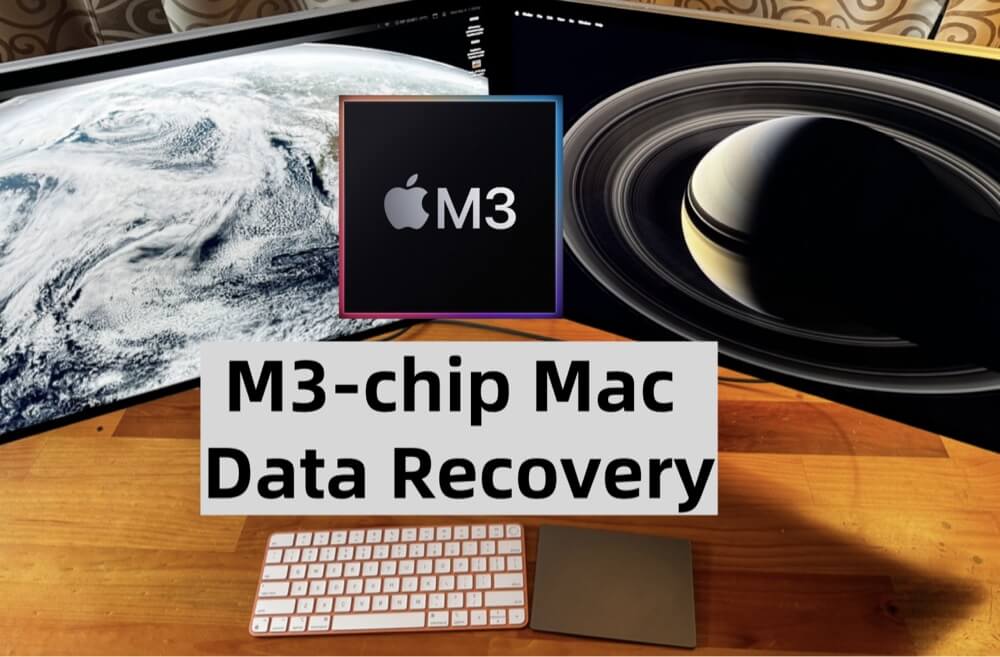
Understanding the M3 Chip and Its Impact on Data Recovery
Apple Silicon has transformed the Mac ecosystem since the M1 chip's debut. The M3 chip, built on a 3nm process, delivers faster speeds, improved graphics, and better power efficiency. Yet, behind this performance leap is a tightly integrated system that also impacts how data is stored and recovered.
Key Architecture and Security Features:
- Unified Memory Architecture (UMA): Shared memory between CPU, GPU, and other components enhances speed but can complicate memory-based data recovery.
- APFS Encryption: Apple File System (APFS) with native encryption and secure boot makes unauthorized recovery attempts more difficult.
- Secure Enclave: Handles encryption keys and biometric data, protecting your data but also locking it down tightly.
These architectural enhancements mean that traditional data recovery approaches may no longer work without adjustments. You need tools and strategies that are fully compatible with M3 Macs and macOS Sonoma or Ventura.
Common Data Loss Scenarios on M3 Macs
Knowing the cause of data loss helps determine the best recovery method. Here are some typical scenarios M3 Mac users face:
- Accidental Deletion
Files dragged to Trash and emptied, or deleted from within apps like Photos or Finder. - macOS Update/Upgrade Issues
Interrupted system updates, especially during beta installations, can corrupt files or delete system data. - Disk Formatting and Partition Errors
Erasing or repartitioning drives - internal or external - without proper backups can result in total data loss. - System Crashes or Kernel Panics
Crashes during software installation or heavy usage may cause files to become inaccessible or corrupted. - External Drive Problems
Drives formatted on other OS (Windows/Linux) may become unreadable, or show as unmounted in Disk Utility. - Time Machine Failures
Backup errors, drive corruption, or misconfigured Time Machine settings can prevent proper restoration.
Built-in Recovery Options on M3 Macs
Before turning to third-party tools, it's wise to try macOS's built-in recovery features. Many users can recover lost data using Apple's native systems.
Recovery Option 1. Put Back Deleted Files from Trash Bin
If the deleted files have not been emptied from the trash bin, you can easily restore them:
- Open trash bin on your M3 Mac.
- Find the deleted files, right-click and choose Put Back to restore them.
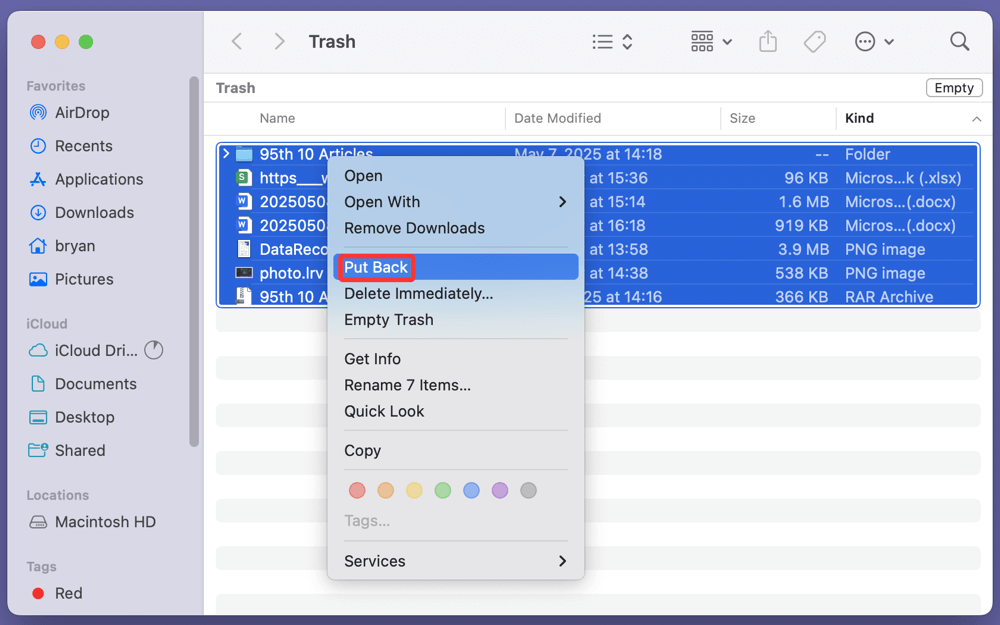
Recovery Option 2. Restore Lost Files Via Time Machine Backup
If you've enabled Time Machine, this is your best bet for recovering deleted files or restoring your system.
- Attach the drive for your time machine.
- Go to the folder containing the erased file.
- In the menu bar, select the Time Machine symbol.
- To find a version that has the file, use the timeline.
- Click Restore.
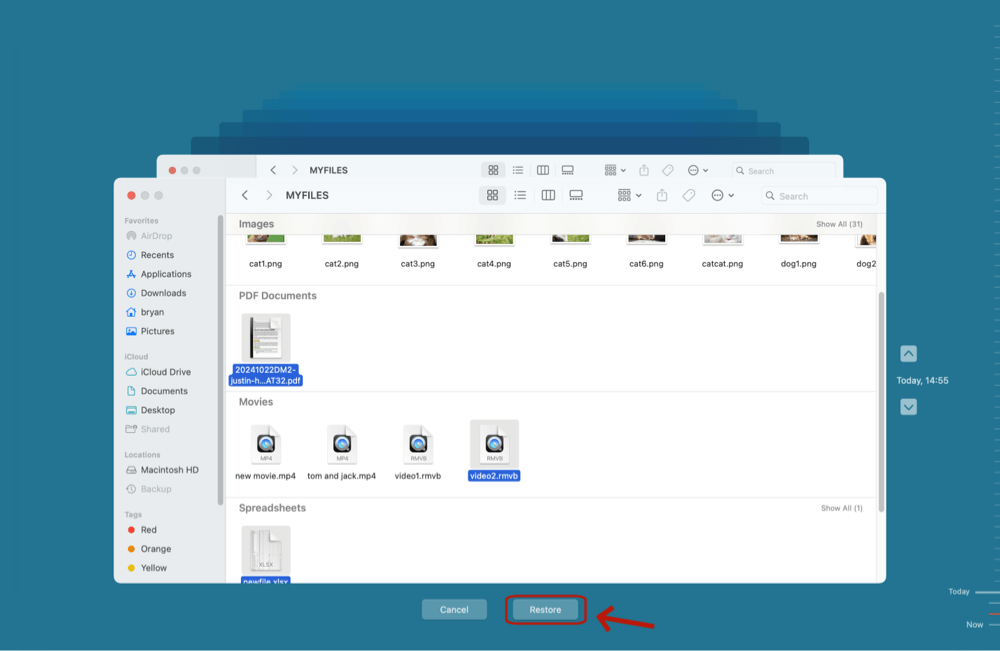
Recovery Option 3. iCloud Drive File Recovery
Files saved to iCloud can often be recovered from the iCloud.com website.
Steps:
- Log in to iCloud.com.
- Go to Account Settings > Restore Files (under Advanced).
- Select and restore deleted files (kept for 30 days).
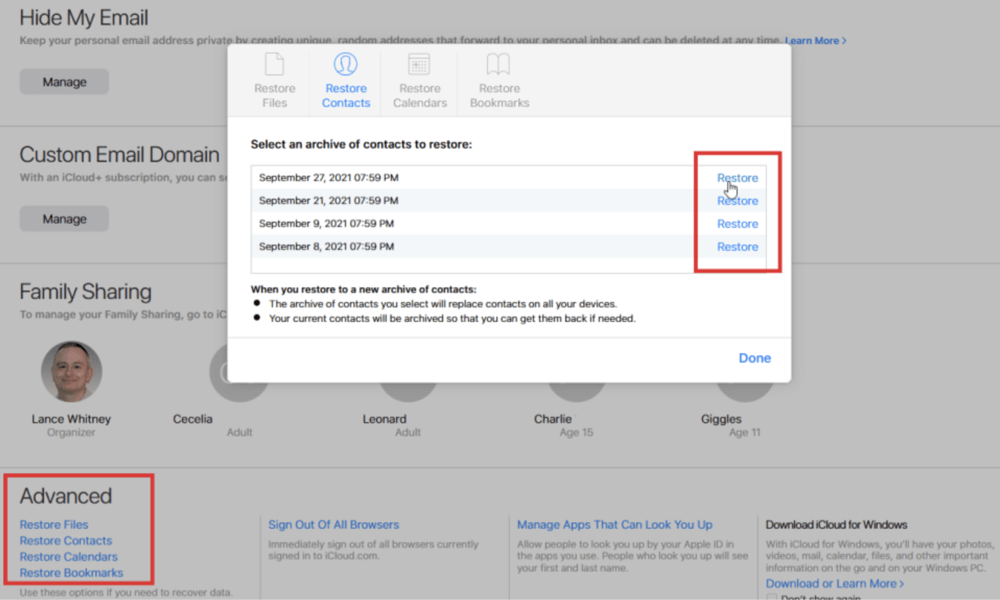
Recovery Option 4. Photos App Recovery
If you deleted photos, they may still be in the Recently Deleted album.
- Open Photos > Recently Deleted.
- Select images and click Recover.
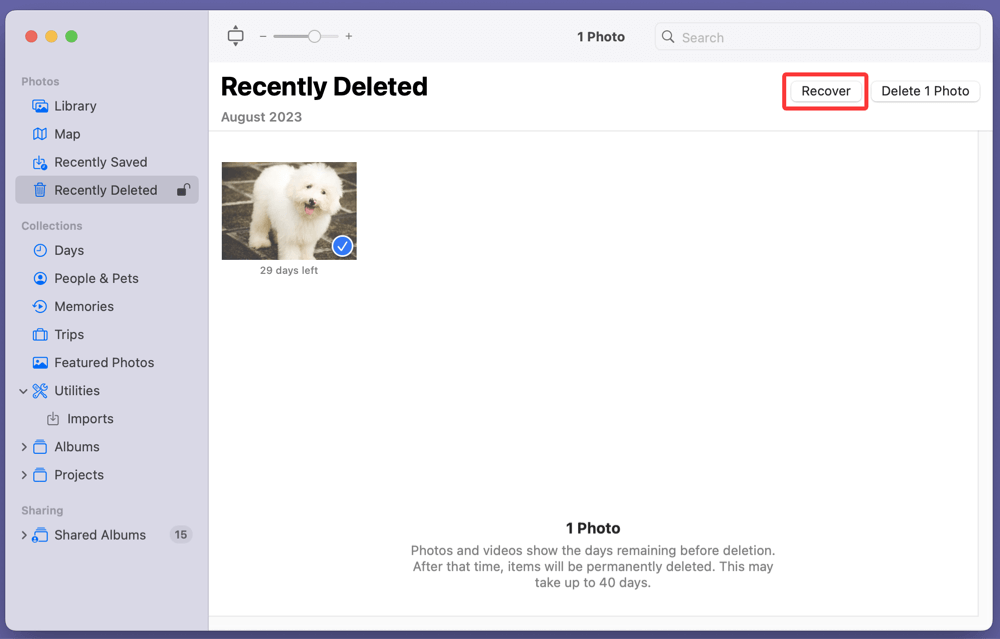
Third-Party Data Recovery Software for M3 Macs
If your lost data isn't recoverable via built-in macOS tools like Time Machine or iCloud, the next step is to explore third-party data recovery software. These tools are specifically designed to scan storage media - internal drives, external disks, USB flash drives, and memory cards - for recoverable files, even from formatted or corrupted volumes.
However, the new Apple M3 architecture introduces unique challenges:
- Many legacy tools built for Intel-based Macs won't function properly unless they've been updated for native Apple Silicon support.
- New security restrictions in macOS Ventura and macOS Sonoma require extra permissions, such as Full Disk Access and approved kernel/system extensions.
- File system changes in APFS (especially encryption and snapshot behavior) require software that understands Apple's latest storage technologies.
Below are the best 5 third-party tools tested and optimized for M3 Macs:
1️⃣ Donemax Data Recovery for Mac
This is one of the best data recovery software for Apple silicon M3 Macs. It can securely and completely recover lost data from a M3 Mac or external storage device.
Donemax Data Recovery for Mac
- Recover permanently deleted or missing files on M3 Mac.
- Recover erased, formatted or inaccessible data on M3 Mac.
- Support APFS, HFS+, NTFS, FAT32, ExFAT, etc.
Key Features:
- Easy to use data recovery tool for M3 Macs.
- Deep scan mode.
- Recover deleted, formatted or inaccessible data.
- Preview all files before saving them.
- Repair damaged disks.
2️⃣ Disk Drill for Mac
Apple Silicon Support: Native support
File Systems Supported: APFS, HFS+, FAT32, exFAT, NTFS, EXT
Recovery Types: Documents, photos, videos, music, archive files
Key Features:
- Deep Scan: Reconstructs file signatures when metadata is missing.
- Byte-by-byte disk imaging: Ideal for failing drives to avoid live scans.
- Preview Before Recovery: See what can be recovered before purchase.
- Recovery Vault: Acts as a supplemental data protection layer for future deletions.
Best Use Case:
Recovering files from formatted drives, deleted partitions, or drives that won’t mount in Finder but appear in Disk Utility.
Limitations:
The free version only allows previewing recoverable files. A Pro license is needed for actual recovery.
3️⃣ EaseUS Data Recovery Wizard for Mac
Apple Silicon Support: Native M1/M2/M3 compatibility
File Systems Supported: APFS, HFS+, FAT/exFAT, NTFS
Recovery Types: Office docs, emails, multimedia files, compressed files
Key Features:
- Quick and Deep Scans: Choose between speed and thoroughness.
- Support for External Drives and SD Cards: Plug-and-play recovery.
- Bootable Media Creation: Recover data from unbootable M3 Macs.
- Filters & Tags: Quickly narrow down file types and last modified dates.
Best Use Case:
Accidentally deleted files, emptied Trash, formatted external drives.
Limitations:
The free tier recovers only up to 2GB. Some features, like bootable USB creation, are gated behind Pro licenses.
4️⃣ Stellar Data Recovery for Mac
Apple Silicon Support: Full native support
File Systems Supported: APFS (Encrypted/Non-encrypted), HFS+, FAT32, exFAT
Recovery Types: Documents, videos (with repair), disk images
Key Features:
- Encrypted Drive Recovery: Handles password-protected APFS volumes (user must provide password).
- BootCamp Partition Recovery: Recovers NTFS partitions created by BootCamp.
- Photo/Video Repair Module: Fixes corrupted media files post-recovery.
- Clone Drives Before Recovery: Safe mode for dealing with failing drives.
Best Use Case:
When you’re dealing with encrypted volumes or professional media files (especially if recovery + repair is needed).
Limitations:
Slower scanning speed compared to others. The Pro version is expensive.
5️⃣ Wondershare Recoverit for Mac
Apple Silicon Support: Yes
File Systems Supported: APFS, HFS+, FAT, NTFS
Recovery Types: Photos, videos (with AI repair), documents, email files
Key Features:
- Advanced Video Recovery: Recovers fragmented video files and reconstructs playable versions.
- Bootable Disk Creation: Recover even when macOS won’t boot.
- Crash Recovery: Start recovery after system crash using USB boot.
- Intuitive User Interface: Suitable for non-technical users.
Best Use Case:
Recovering videos and photos from damaged SD cards or deleted camera files.
Limitations:
Not all formats are supported for video repair. Free version only allows 100MB recovery.
Permissions Required:
To run these tools effectively:
- Grant Full Disk Access in System Settings > Privacy & Security.
- Disable SIP (System Integrity Protection) only if absolutely necessary and you know what you’re doing.
- In macOS Ventura and Sonoma, you may need to enable kernel extensions via Startup Security Utility in Recovery Mode.
Steps to Recover Lost Data on M3 Mac
Follow the steps below to recover lost data from a M3 Mac:
Step 1. Download and install the reliable data recovery software - such as Donemax Data Recovery for Mac on your M3 Mac.
Step 2. Open Donemax Data Recovery for Mac, then select the drive where you lose your files.
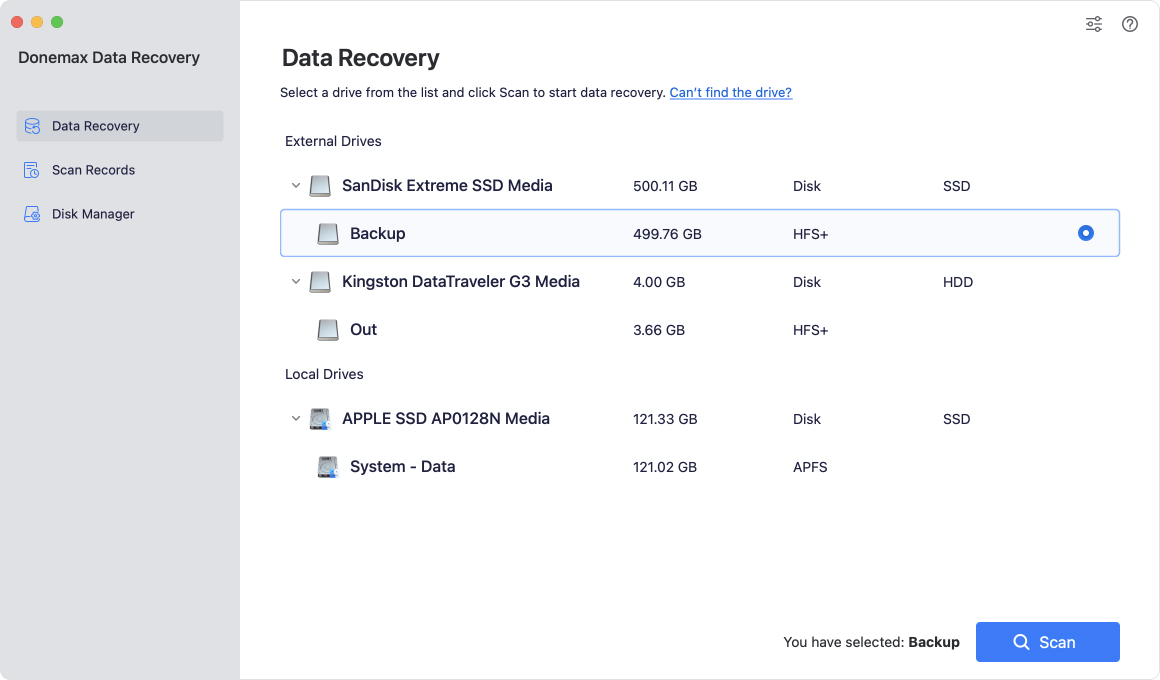
Step 3. Click on Scan button to deeply scan the selected drive and find all recoverable files.
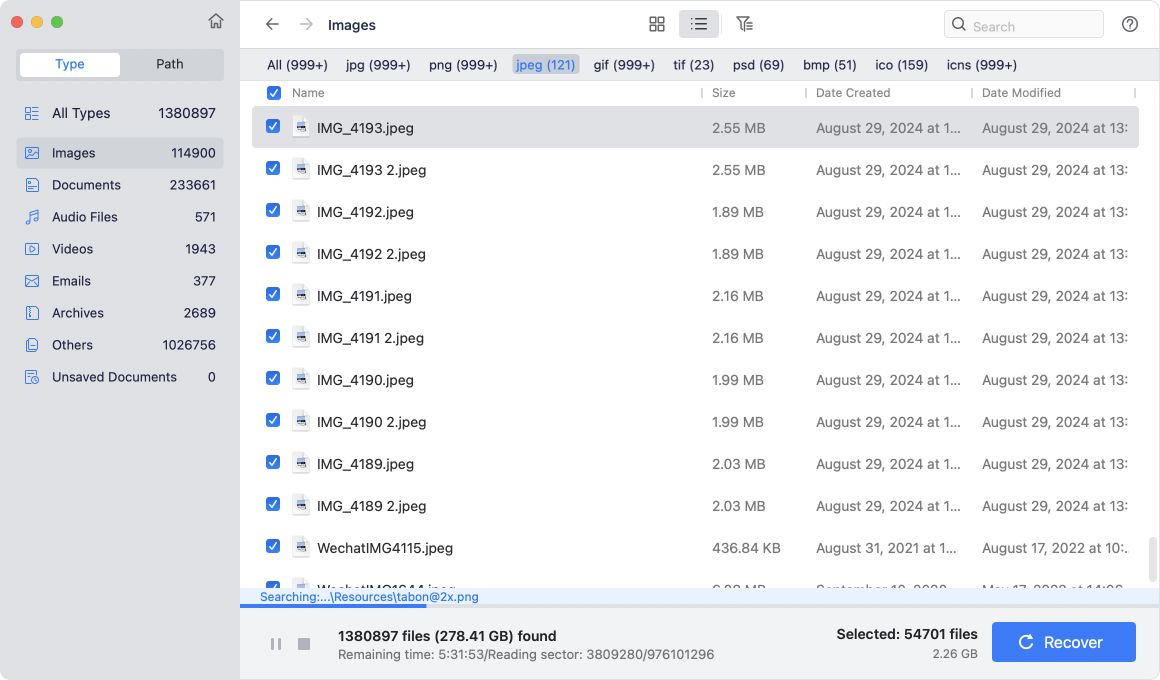
Step 4. Once the scan is completed, you can preview all recoverable files. Then select the wanted files, click on Recover button to save them.

Professional Data Recovery Services for M3 Macs
If the internal storage is physically damaged, or if encrypted data recovery fails, it's time to consider a professional lab.
When to Use a Pro:
- Mac won't boot or is water/fire damaged.
- SSD has hardware-level issues.
- Drive encryption prevents software-based recovery.
- You require HIPAA/GDPR-compliant recovery for sensitive data.
What to Expect:
- Diagnostic fee (sometimes waived).
- Price based on damage level and recovery complexity.
- Clean room environments ensure safe disassembly of SSD components.
Reputable providers include DriveSavers, Ontrack, and Secure Data Recovery—many of which support M-series Macs.
Preventing Future Data Loss on M3 Macs
Data loss is unpredictable, but proactive protection dramatically reduces your risk.
1. Enable Time Machine with an External SSD
- Plug in an external drive and use Time Machine for regular backups.
- Consider versioning and encryption for added safety.
2. Use iCloud and Redundant Cloud Services
- Store documents and photos in iCloud, Google Drive, or Dropbox.
- Enable Desktop and Documents syncing in System Settings > Apple ID > iCloud.
3. Monitor Disk Health
- Use tools like DMcleaner for Mac, DriveDx or Smartmontools to keep an eye on SSD health.
- Address early warning signs (frequent crashes, slow access) immediately.
4. Partition Drives Wisely
- Avoid mixing OS and personal files on one partition.
- Use external drives for file archiving, especially if working with large media.
Conclusion
Despite the technological sophistication of M3 Macs, data loss remains a frustrating and costly experience. Fortunately, you have a wide range of tools - from Time Machine and iCloud to powerful third-party recovery software - that can help recover deleted, formatted, or inaccessible data.
By understanding the architecture of the M3 chip, using macOS's native recovery tools, and leveraging compatible third-party apps (such as Donemax Data Recovery for Mac), you can dramatically improve your chances of successful recovery. And if things go south, professional services are always a fallback.
Above all, remember: the best data recovery strategy is a robust backup strategy. Take the time to prepare now, and your future self will thank you.


Donemax Data Recovery for Mac
Donemax Data Recovery for Mac is one of the best Mac data recovery software. It is easy-to-use and can help in recovering deleted, formatted, inaccessible or lost data from Mac HDD/SSD, external disk, USB drive, SD card, camera or other storage devices.
Related Articles
- May 19, 2025How to Recover Deleted ZIP File on Mac? [4 Methods]
- Nov 11, 2024How to Recover Screen Recordings on Mac?
- Apr 25, 2025Recover Deleted / Disappeared Final Cut Pro Projects
- Nov 13, 2024How to Recover Lost Data from Apple M4 Chip Mac [4 Methods]
- Sep 25, 2025Top 5 Data Recovery Software for macOS Tahoe – Complete Guide
- Jan 14, 2025How to Recover Lost Data from Fusion Drive on Mac?

Christina
Christina is the senior editor of Donemax software who has worked in the company for 4+ years. She mainly writes the guides and solutions about data erasure, data transferring, data recovery and disk cloning to help users get the most out of their Windows and Mac. She likes to travel, enjoy country music and play games in her spare time.

Gerhard Chou
In order to effectively solve the problems for our customers, every article and troubleshooting solution published on our website has been strictly tested and practiced. Our editors love researching and using computers and testing software, and are willing to help computer users with their problems
